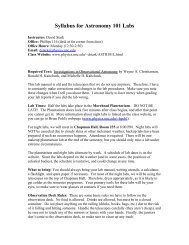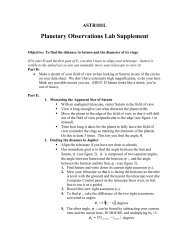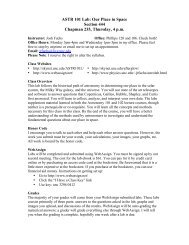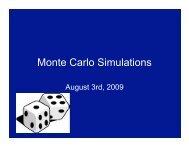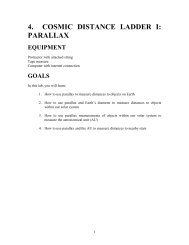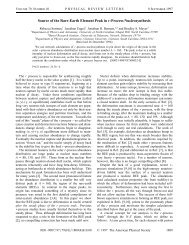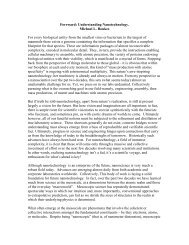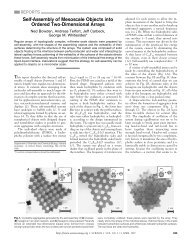Topics in Statistic Mechanics
Topics in Statistic Mechanics
Topics in Statistic Mechanics
You also want an ePaper? Increase the reach of your titles
YUMPU automatically turns print PDFs into web optimized ePapers that Google loves.
<strong>Topics</strong> overview<br />
1. A brief survey of percolation. Please <strong>in</strong>clude the def<strong>in</strong>ition of the percolation<br />
model, its applications, exact solution on Cayley tree, and exact solution of the<br />
percolation threshold on the square lattice.<br />
2. Exact solution of the mean-field Blume-Capel model.<br />
Please locate the l<strong>in</strong>e of the phase transitions, which is consisted of a l<strong>in</strong>e of<br />
critical po<strong>in</strong>t, a tricritical po<strong>in</strong>t, and a segment of 1st order transition. Summarize<br />
the behavior of the energy density, the specific heat, the magnetization density,<br />
the susceptibility, the vacancy density, the compressibility near the transition<br />
l<strong>in</strong>e, and as a function of temperature 1/K. Derive critical exponents.<br />
3. Is<strong>in</strong>g model is an amaz<strong>in</strong>gly beautiful toy model <strong>in</strong> statistical mechanics. Please<br />
describe the exact solution of the Is<strong>in</strong>g model <strong>in</strong> 1D (<strong>in</strong>clud<strong>in</strong>g partition sum and<br />
all observable quantities), the exact solution of the critical po<strong>in</strong>t on the square<br />
lattice. Summarize theoretical exponent for d>1. Summarize its generalization to<br />
the Potts model (ord<strong>in</strong>ary and chiral). Can you locate the critical po<strong>in</strong>t of the<br />
ord<strong>in</strong>ary Potts model on the square lattice (us<strong>in</strong>g the duality relation)?<br />
4. 4, Quantum Is<strong>in</strong>g model plays an important role <strong>in</strong> quantum statistics. Its<br />
Hamiltonian is<br />
where sigma is the Pauli matrix. Please describe its phase transition. Us<strong>in</strong>g the<br />
path-<strong>in</strong>tegral language (Suzuki-Trotter formula), a d-dimensional quantum Is<strong>in</strong>g<br />
model can be mapped onto a (d+1) dimensional quantum Is<strong>in</strong>g model. Please<br />
derive this mapp<strong>in</strong>g.<br />
5. The classical XY model is frequently used to describe the universal behavior <strong>in</strong><br />
the phase transition between Mott-<strong>in</strong>sulator and superfluidity (or<br />
superconductivity). Please give reason<strong>in</strong>g why this is possible. Summarize the<br />
phase transition of the classical XY model <strong>in</strong> 1D, 2D, 3D, and more. Give the<br />
reason<strong>in</strong>g why the 2D XY model does not have long-ranged order<strong>in</strong>g at non-zero<br />
temperature (as rigorously as possible)—Merm<strong>in</strong>-Wagner theorem.<br />
6. In real worlds, we have bosons and fermions. By <strong>in</strong>terchang<strong>in</strong>g two of such<br />
particles, the phase of the wave function accumulates 0 and PI, respectively, for





